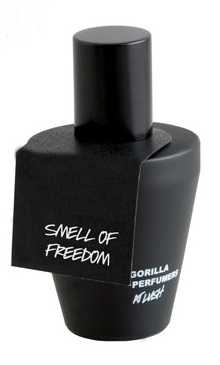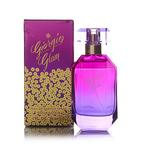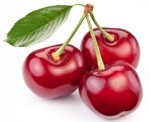Lush The Smell of Freedom (2010): Inspired by Three Survivors {Fragrance Review}
 People who are attracted to old-school perfumes and even beyond them, to antiquated, pre-modern concoctions making you think Marie-Antoinette might have worn them, ought not to neglect to make a stop at a Lush store. After you ignore the mounds of zany soaps you will notice the perfume shelves where opaque bottles, purse sprays and cream sticks are all wearing the same black uniform but with different name tags on them. What escape from the bottles are by contrast unusual olfactory atmospheres smelling of burnt flower fields under the summer sun, hay-stacks buzzing with animal life, aged antique perfume bottles with remnants of thick 18th century compositions. The fragrances created by the house feel in a way like antique curios -- their aesthetics seem to be from another age. Part of this effect must lie in the use of a wealth of natural ingredients which makes them smell like exhaling, wilted flower bushes in the heat of May, reminding me by association of the historically reconstructed M.A. Le Sillage de la Reine.
People who are attracted to old-school perfumes and even beyond them, to antiquated, pre-modern concoctions making you think Marie-Antoinette might have worn them, ought not to neglect to make a stop at a Lush store. After you ignore the mounds of zany soaps you will notice the perfume shelves where opaque bottles, purse sprays and cream sticks are all wearing the same black uniform but with different name tags on them. What escape from the bottles are by contrast unusual olfactory atmospheres smelling of burnt flower fields under the summer sun, hay-stacks buzzing with animal life, aged antique perfume bottles with remnants of thick 18th century compositions. The fragrances created by the house feel in a way like antique curios -- their aesthetics seem to be from another age. Part of this effect must lie in the use of a wealth of natural ingredients which makes them smell like exhaling, wilted flower bushes in the heat of May, reminding me by association of the historically reconstructed M.A. Le Sillage de la Reine.
One perfume which caught my attention recently in particular (with Orange Blossom) is The Smell of Freedom. As it turns out the composition, signed by perfumer Simon Constantine based on an idea by father Mark Constantine, is inspired by the weaving of three biographies meeting in a bottle, three persons having each inspired a different scent which were then combined, a building method favored by the noses which is exemplified also by the Inhale and Exhale components in Breath of God....
"Simon's first fine fragrance, Breath of God, was formed of two distinct scents, which, when combined, became a mesmerising and powerful perfume. In The Smell of Freedom, he continues this style and combines three beautiful fragrances to a wonderful effect. This perfume is based on Simon's experiences of meeting three survivors of hardship. The common factor was freedom. He used local materials and created a lasting triptych portrait."
One of the buliding blocks is inspired by the legend surrounding a baobab tree in Australia and the life of an aboriginal woman who had "travelled extensively through Europe and South-East Asia as an artist before settling with a French duke in Darwin to have children. Nowadays she has moved back to her home and lives a mixture of modern life and bush tucker."
The second olfactory brick is inspired again by a place - the Old Delhi station - and a personality, this time a Tibetan monk, the Venerable Ngawang Woebar in Mcleod Ganj in Dharamsala. Imprisoned by the Chinese, he was released after four months of abuse and torture but had to take flight to Nepal crossing the Himalayas on foot and running out of food before reaching a Nepalese monastery; he was finally deported to India. What impressed the perfumer most was the sense of "quiet resilience" expressed by the monk.
The third layer of meaning is a perfume born from Lush's involvement with Reprieve and the "Fair Trial My Arse" campaign exposing the activities of illegal prisons, in particular, Guantanamo.
"All our staff wore oversized orange pants with the phrase ‘fair trial my arse’ emblazoned on them criticising the use of illegal prisons such as Guantanamo. We also sold two bath bombs, each with a picture of a prisoner from Guantanamo bay trapped in the centre. As the bomb fizzed away your particular prisoner would eerily float to the surface of your bath. One, Sami Al-Hajj, was on hunger strike at the time, being force fed by tube daily."
Notes: Lemongrass, lemon myrtle, Tunisian neroli, jasmine, ginger, fire tree, clove, black pepper, Australian sandalwood, oudh, orris.
I am tempted to say that The Smell of Freedom feels "special" a scent, even before you read about the background stories. It offers a softly self-assured charm without letting you read too trasparently into it. You can catch nuances of lemongrass, a tea accord which is soft and undefinable, the freshness of ginger, the powderiness of orris, the sweetness of neroli and jasmine. Most of all, there is this sensation of meeting a perfume which has an old-school quality about it, reminiscent somewhat of the likes of Femme and Madame Rochas, and even older.
There is something intact about The Smell of Freedom - perhaps its sense of inner freedom - which feels like a time-capsule accord having travelled through a few centuries to be preserved in an unlikely place. The oudh note makes the fragrance be a priori in tune with current trends but here it smells mostly of vintage-y perfume thanks to its abstract animalistic nuance with a musty edge. In fact, it smells to my nose mostly of a very solar, aged ambergris having captured all the rays of the sun over the years as it floated on the ocean. If you like Zibeline by Weil, there is a chance you will like it too. It is the clove-y floral accord mixed with aromatic herbs and spices which makes the perfume feel ancient, wilted, from another time.
Probably, its triple-personality structure makes it something of an authentically elusive scent, a quality I think is highly desirable in a perfume. It is smilingly mysteriously - a bit of a Jocunda scent - without being sultry, yet it smells awfully good as it permeates the air around you with its suave smells. It is seductive without trying to be.
What I experienced was a strong urge to trace back my steps and get this unique scent realizing there was something uncommon about it. Its high quotient of naturalness makes it also a wellness scent probably. It would be certainly interesting to have it in parfum form to see how its qualities would bloom further and last even longer.










Thanks very much for giving this perfume the exposure it deserves. I think it's really rather special.
I'm glad you think so too. They have a certain emotion-laden quality, for some of them, in a quiet way.